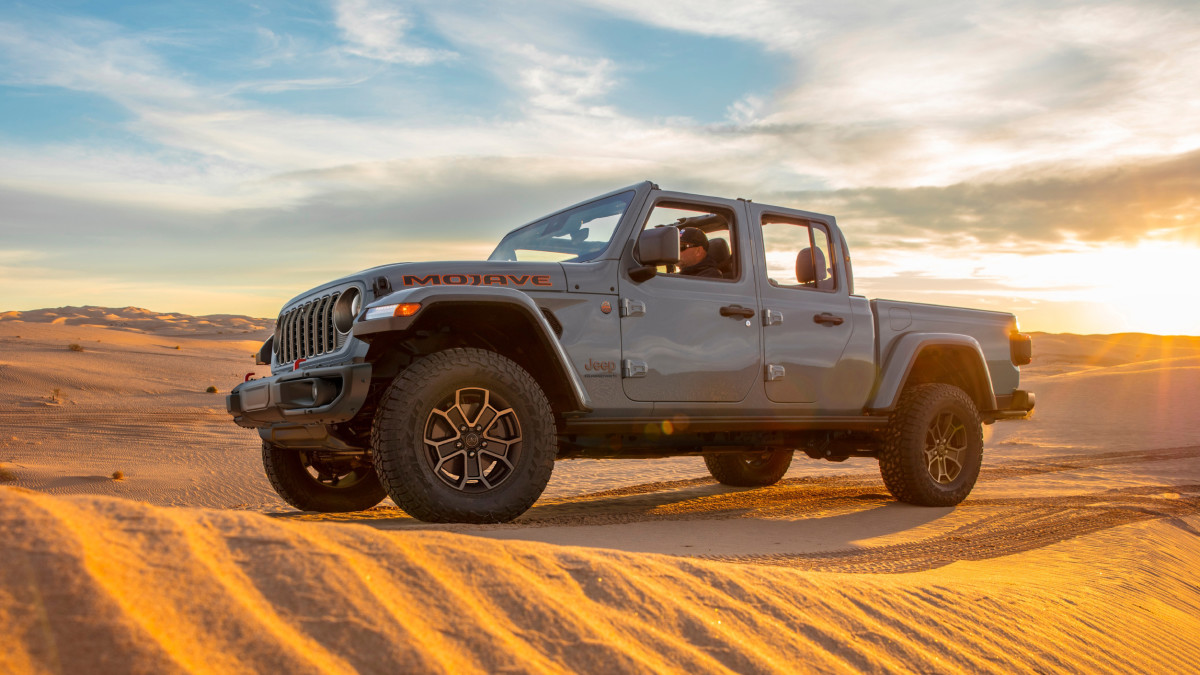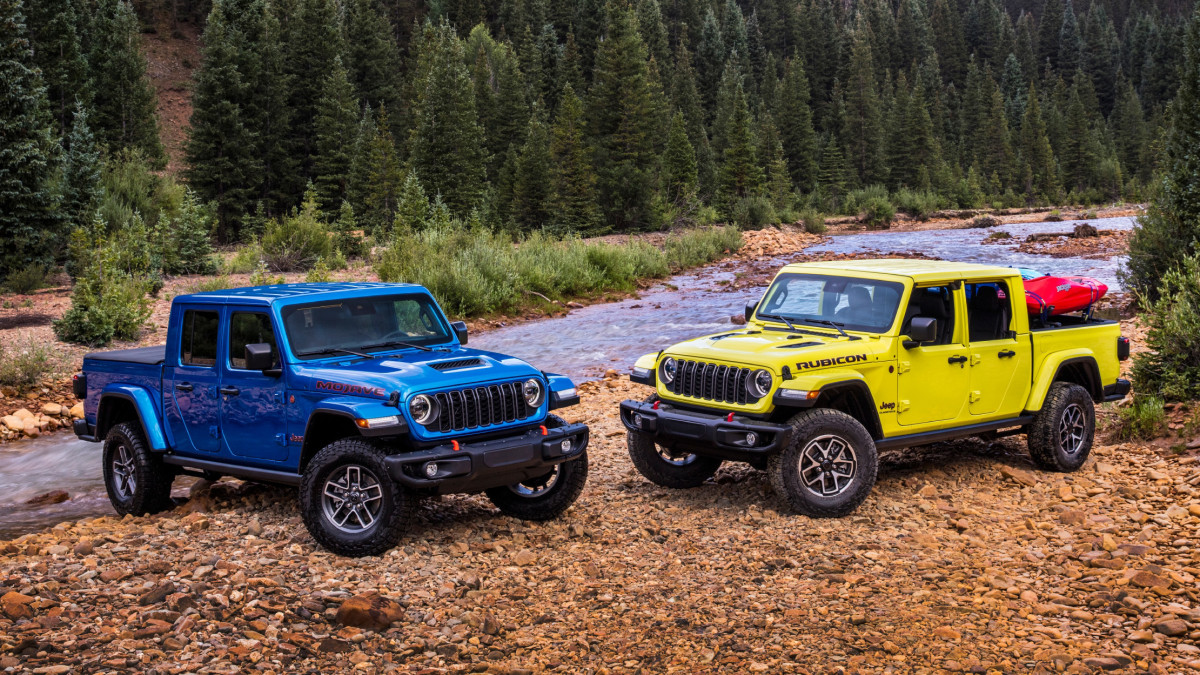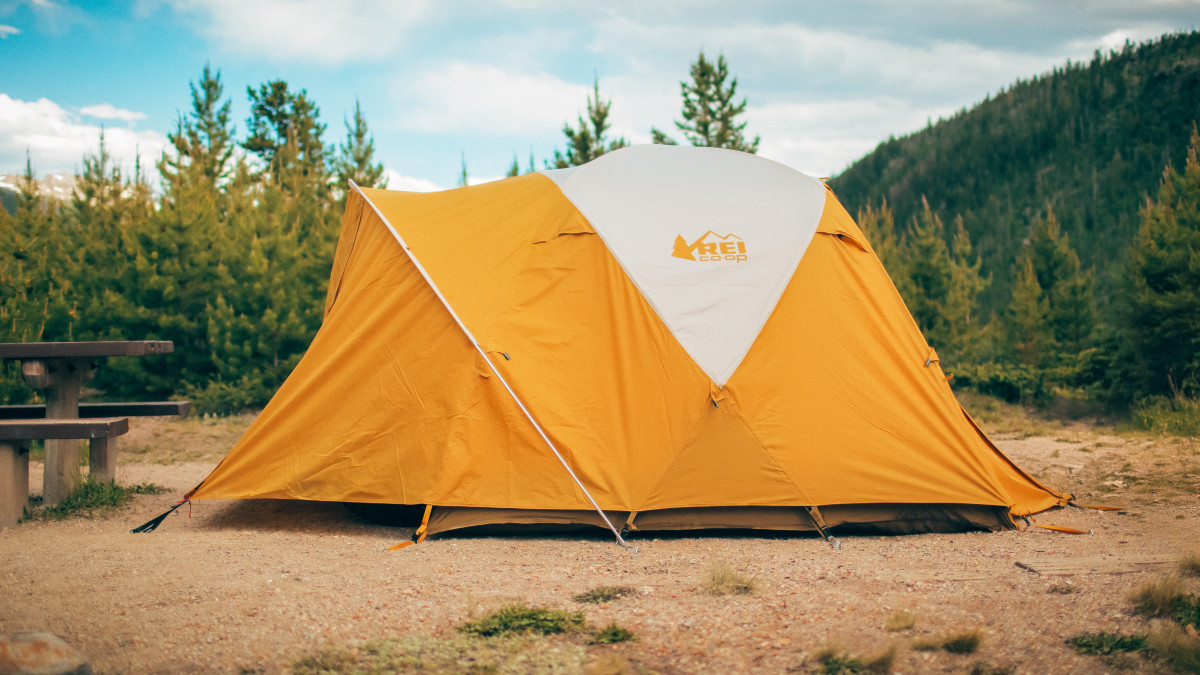
This Unassuming Bus Is An EREV That Runs On Ethanol–The World’s First


Lynk & Co's second all-electric car is set to unveil in Europe on October. It's believed it will be called Z02 in Europe and Z20 in China.
The post Lynk & Co Z02/Z20 to unveil in Europe in October as a compact electric SUV appeared first on CarNewsChina.com.


2024 Jeep Gladiator Mojave X (left) and 2024 Jeep Gladiator Rubicon X
BLOOMFIELD HILLS, Mich. -- When it comes to driving something cool, a 2024 Jeep Gladiator Mojave X is near the top of the list. It has all of the Jeep vibes, but in truck form, which has pros and cons. I enjoyed a late summer weekend in the 2024 Gladiator Mojave X, and these are my thoughts.
It's a legit truck
When Jeep revealed the Gladiator at the 2018 L.A. Auto Show, it was one of the most anticipated debuts the car industry has seen in years. There was palpable buzz. Right up until it was revealed, most expected Jeep to call its reborn truck the Scrambler. Nearly six years on, Gladiator was clearly the right choice. At the time, most thought the truck would be a Wrangler with a bed, but Jeep took great steps to make a legitimate midsize truck that is among the best in the segment with plenty of towing, hauling and storage capabilities.

There's pros and cons to that
From a format perspective, the truck has advantages and disadvantages over the Wrangler. If you need an SUV, well, obviously, the Wrangler is better. It’s shorter, which means it fits better in off-road situations and your garage. On the other hand, the Gladiator is longer with a longer wheelbase, which means it drives a little better and negates the Wrangler’s “I feel like I’m going to tip over feeling” that’s present in too many daily experiences.
The driving dynamics are enough to make me think I’d go with a Gladiator as a daily commuter toy, which the Wrangler is used for all too often. I’d opt for the roll-up tonneau cover, which also allows the Jeep truck to function with crossover capability. There's something to be said for the Mojave X's Fox shocks and 1-inch lift kit, which make this desert runner even cushier on road, too.
The ubiquitous Pentastar soldiers on
The Pentastar V6 is ubiquitous in Stellantis products, and it’s the default ICE option for the Wrangler and Gladiator. It soldiers on in Jeep’s off-roaders, providing a traditional driving experience with expected dynamics. It was under the hood of this Gladiator Mojave X, and I generally liked it. Teamed with the eight-speed automatic, it’s predictable if a bit laborious. The Pentastar is the one that feels the most like a Jeep engine in the lineage of the long-running 4.0-liter inline six, which had American Motors’ origins.
The Gladiator gets a 4xe version in 2025. I would strongly consider the 4xe with a home charger, if I were in the market.


Rough fuel economy, easy roof removal
The fuel economy is rough, to the tune of 17 mpg city / 22 highway, ranking near the bottom of the segment, though the Gladiator does offer a range of up to 418 miles. The large all-terrain tires and numb steering make for a pontoon-like dynamic. The visibility, thanks to the ride height, is actually pretty good.
Take the roof panels off, and it's a cathartic open-air experience. It’s also super easy. Just pull a couple of levers and lift off. So easy, in fact, my son pulled one off entirely on his own and deposited it in the living room to my surprise.
What’s next for the Gladiator?
Sales are down 24% through the first half of the year, falling farther than the Wrangler (17%) and the Jeep brand overall (19%). The 2024 refresh should help, offering tech and design upgrades and two new trims. The Gladiator ranks near the bottom of the Jeep sales charts, (10,489 units) ahead of only the Jeep Grand Wagoneer luxury SUV and far behind the Wrangler (38,896) and Grand Cherokee (52,296).
To me, that speaks to the Gladiator’s coolness and niche status, which are attributes. But, with volume that low, the Jeep truck does seem vulnerable. Plus, it’s pretty expensive. Conversely, it’s genetically similar to the Wrangler and they’re built in the same Toledo, Ohio, facility, so there’s a business case for keeping it around as the Wrangler’s sidekick. That’s not a bad spot. When cross-shopping midsize trucks, it's different from anything else in the segment. That's a great spot.

Deutsche Bank expects the Nio main brand to launch four new products and sub-brand Onvo to launch two new products in 2025.
For details, please visit CnEVPost.

When it comes to outdoor adventure gear, few names are as trusted as REI Co-op, and their Base Camp 4 Tent is a shining example of why. Designed for rugged durability and versatile performance in three-season weather conditions, this tent is perfect for family camping trips, overlanding expeditions or a weekend festival. With its spacious interior, weather-resistant materials, and thoughtful features, the REI Co-op Base Camp 4 is a reliable and comfortable shelter. However, it isn't without its flaws—the tent's heavy weight, less-than-perfect stakes and the use of pole sleeves instead of superior pole clips hold it back from being truly great. Read on to discover more about this budget-friendly base camp tent and why it remains a popular choice among outdoor enthusiasts.

Pros | Cons |
Spacious interior, high peak height Large doors and vestibules Multiple interior storage pockets | Heavier and bulkier than backpacking tents Limited floor space per person Use of tent pole sleeves |
The first thing I noticed when the Base Camp 4 arrived was its weight. There are a few types of tents and the tent I most recently tested, the Half Dome SL3+ falls into the category of backpacking tent. The Base Camp 4 is more of a car-camping tent. What is the difference you may ask? Size and weight. The Base Camp 4 is heavy compared to the Half Dome; more than three times as heavy. I'm definitely not going to be carrying this on my back, no matter how short the hike is to my backcountry campsite. That said, that's not the point of this tent. The Base Camp, REI's most weather-resistant tent, is heavy due to its durability, the incredible amount of features it boasts and its size, both footprint-wise and height.
Setting up the Base Camp 4 is straightforward, thanks to its five-pole dome design. The poles are color-coded, which simplifies the process, and the reinforced structure ensures the tent stands up well to high winds. That said, this is a tent that is best set up by more than one person. It may be straightforward to put up, but it does take some time, especially compared to the Half Dome SL 3+, which makes sense considering the size and complexity compared to the latter. As a solo camper, setup took much longer than it did when I was with others, and I found the stakes and poles in particular to be a bit more aggravating to use than those in the Half Dome. Also, the Base Camp 4 utilizes tent pole sleeves in addition to tent pole clips. The latter are both lightweight and easy to use, while tent pole sleeves are just light and incredibly frustrating to use.
Once set up, the interior of the Base Camp 4 is roomy and comfortable, with dimensions of 100 x 86 inches. The peak height of 63 inches allows for easier movement inside the tent, and most adults can stand up hunched over without feeling cramped. While it’s marketed as a four-person tent, it’s important to note that compared to the three-person Half Dome, you’re only getting about 22.5% more floor space, so each person will have slightly less room, making this tent perfect for a group of two or three who want a lot of space.

Among the standout features of the Base Camp 4 are its large doors and vestibules. These provide easy access and ample storage for gear, helping to keep the interior clutter-free. The multiple interior storage pockets are a nice touch, allowing you to keep small items organized and within reach.
The Base Camp 4's sturdy construction and five-pole dome design with a reinforced structure make it a reliable option in various weather conditions. The polyester rainfly and floor offer excellent protection against rain and moisture, and the tent performed well in high winds, providing a secure and stable shelter.
Good ventilation is crucial for a comfortable camping experience, and the Base Camp 4 delivers in this regard, even with the rainfly up. The tent features large mesh panels and multiple vents that allow for excellent airflow, reducing condensation and keeping the interior fresh. The vestibules can also be opened allowing for maximum airflow.

I particularly enjoyed this tent's interior storage options, of which there are plenty. These pockets provided convenient and easily accessible storage for small items like flashlights, phones, keys and camera gear. This organization not only helped keep the tent clutter-free but also made my camping experience more enjoyable and efficient, as I didn’t have to rummage through our bags to locate essential items.
While the REI Co-op Base Camp 4 offers exceptional comfort and durability, it does come with a few drawbacks, the biggest being its weight and bulkiness. At 17 pounds 5.6 ounces, this tent is significantly heavier than typical backpacking tents, making it less suitable for those looking to travel light or cover long distances on foot. Additionally, despite being marketed as a four-person tent, it provides less floor space per person compared to other three and four-person models, meaning that while the tent is spacious overall, the individual space allocation is relatively limited. This might make the tent feel a bit cramped, especially if all campers have a lot of gear.

The Base Camp 4 is priced higher than smaller, simpler tents due to its larger size and numerous added features, such as multiple storage pockets and a reinforced structure. This higher cost might be a consideration for budget-conscious campers, though the investment can be justified by the tent’s enhanced comfort and durability.
For those who prioritize comfort and space over weight, the REI Co-op Base Camp 4 is an excellent choice for car camping. Its sturdy construction, roomy interior, and thoughtful features make it a reliable and comfortable option for family camping trips or outings with friends. While it’s heavier and bulkier than traditional backpacking tents, the added space and durability make it well worth the investment for car campers seeking a high-quality tent.
Onvo L60, the first model in Nio's more mass market brand will launch on September 19. Prices will not be much lower than pre-sales.
The post Onvo L60 will be only slightly cheaper than pre-sales prices when launched on September 19 appeared first on CarNewsChina.com.


Former Goldman Sachs managing director Pan Deng has joined Neta as its new CFO to head the IPO of the brand's parent company Hozon.
For details, please visit CnEVPost.


Nio is aiming to deliver 220,000 vehicles in 2024, including 200,000 under the Nio main brand and 20,000 under its sub-brand Onvo, its president said.
For details, please visit CnEVPost.